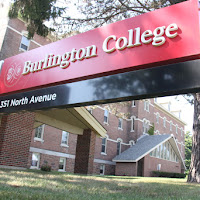Non-interventionist Internationalism: Toward a Left Foreign Policy
I have recently read a number of pieces in left-of-center publications lamenting the lack of a coherent Left foreign policy, the most recent being Ed Burmila's "Naughty by NATO" in the Sept/Oct issue of The Baffler. These articles carry a couple of common themes. For starters, the authors argue that the Left does not spend enough time focusing on foreign policy, preferring the territory of domestic policy instead. This leads to a situation in which the Left only evaluates foreign policy on a case-by-case basis, without any clear overarching priorities or goals. Furthermore, to the extent that the Left does have a foreign policy, it is based simply on opposing Washington's neoliberal/neoconservative consensus of interventionism, without articulating any positive vision of how the US should engage with the world beyond refraining from the use of military force.
I generally agree with these critiques. As someone whose own political radicalization began with an exploration of the horrors of US foreign policy, I find myself disappointed that today's Left does not spend enough time talking about it beyond mere lip service. That being said, there have been some on the Left who have done a good job of illuminating what the questions at hand are. The Nation, for instance, has done an excellent job of covering both the Trump administration's foreign policy misdeeds, as well as the international movements promoting peace and global solidarity. Yet such a focus has been generally lacking elsewhere, especially in the coverage of the presidential election. The Democratic primary has mostly been centered on domestic policy issues like health care; even discussion around climate change and immigration - issues inherently international in nature - have mostly been referred to only in terms of the domestic response. The lack of attention to the threat of nuclear annihilation is also concerning.
Especially in the face of a Trump presidency, and the clear desire of the foreign policy establishment to wrest back control, the need for a real Left foreign policy is urgent. This post is my attempt to contribute to this conversation - in however small a way - by putting into writing for the first time the vision for such a foreign policy that I have had in my mind for a while. I refer to such an approach as "non-interventionist internationalism".
As its name suggests, non-interventionist internationalism effectively consists of two parts. The first part, non-interventionism, is what might be considered more familiar territory for Leftists: the reduction of the use of US force around the world. This should be thought of in terms more broadly than simply disengaging from specific conflicts or countries. What's ultimately needed is the ending of all US overseas operations, the withdrawal of all US military and intelligence personnel from abroad, and the closing of all US overseas bases. The Left should call on the US to renounce all unilateral use of force abroad, and to renounce the right to destabilize and overthrow foreign governments. The Left also needs to call for the end to overseas arms sales, foreign military aid, and the training of foreign security forces.
While such policies would reverse the harm the US is currently doing abroad, by themselves they do not address how the US should engage with the rest of the world. This is where the principle of internationalism comes in. Internationalism is not something often discussed on the Left, but to my mind is absolutely foundational to what any Left foreign policy should look like. The central aspect of internationalism is engagement with the existing framework of international organizations and treaties set up in the aftermath of World War II. Under such an approach, the UN would be the key avenue for the US to pursue its foreign policy. For instance, any US forces that would be sent overseas would do so only as part of UN peacekeeping missions. No more would the US act unilaterally, or under the guise of "multilateral" organizations like NATO. Of course, in order for such a policy to be truly viable, the UN itself would need to be reformed, starting with abolishing the veto power of the permanent security council members.
International law is also crucial to such an approach. While there is a large body of existing international law, much of it is toothless, as the US - as the most powerful nation in the world - either refuses to abide by it or does so only as it suits its interests. The Left should focus on getting the US to sign onto and ratify treaties it is not yet a party to, and then subject itself to the same level of accountability as the rest of the world. The idea is to build both the UN and international law into credible avenues for advancing the goals of the Left on the international stage: mitigating the effects of climate change; abolishing nuclear weapons; finding diplomatic solutions to ongoing conflicts; preserving the sovereignty of indigenous populations; promoting the rights of women; and so on and so forth.
The UN is not the only international venue by which a Left foreign policy should be pursued. For instance, the US is a major power in regards to the World Bank, the IMF, and the WTO. The Left should focus on transforming these institutions away from promoting neoliberalism, and toward reducing global income and wealth inequality. Similarly, the Left needs to focus less on nationalistic rhetoric around international trade agreements, and more on establishing a global fair trade regime that works for the benefit of working people and not multinational corporations.
The Left should also take a greater look at how "domestic" policy priorities, like immigration, are actually very much tied to US foreign policy as well. American interventionism, the American-led global War on Drugs, and the American promotion of neoliberal policies have all played key roles in driving people to seek refuge and asylum in the US. The Left should pursue policies that both reduce these harms and repair the damage done. An example of one such policy could be something akin to the "Marshall Plan for Central America" proposed by Julian Castro. Another is open borders, which the mainstream Left has been reluctant to call for so far, but which should be looked at as a form of reparations for the harm the US has done around the world.
Overall, the domestic implications of such a foreign policy would be enormous. The cost savings associated with reducing (and ultimately abolishing) much of America's armed forces and intelligence services could be put back into a "peace dividend", in the form of domestic spending priorities like health care, education, and green infrastructure. In theory, the US would no longer have a standing army at all, with only a transformed National Guard and Coast Guard remaining for the purpose of defense. The curbs to executive power that this would entail means Congress could finally reassert its authority over foreign policy, while simultaneously being subject to the long-ignored requirements of international law - which would have major implications for the well-being of the domestic population.
What I have laid out here is simply a loose framework for what a Left foreign policy should look like, the granular specifics of which I do not have the capacity to delve into at this point. My intention here, again, is simply to give an idea of what the Left should start to think about and focus on more in regards to foreign policy. This is not the end of a conversation, only the beginning of one.







